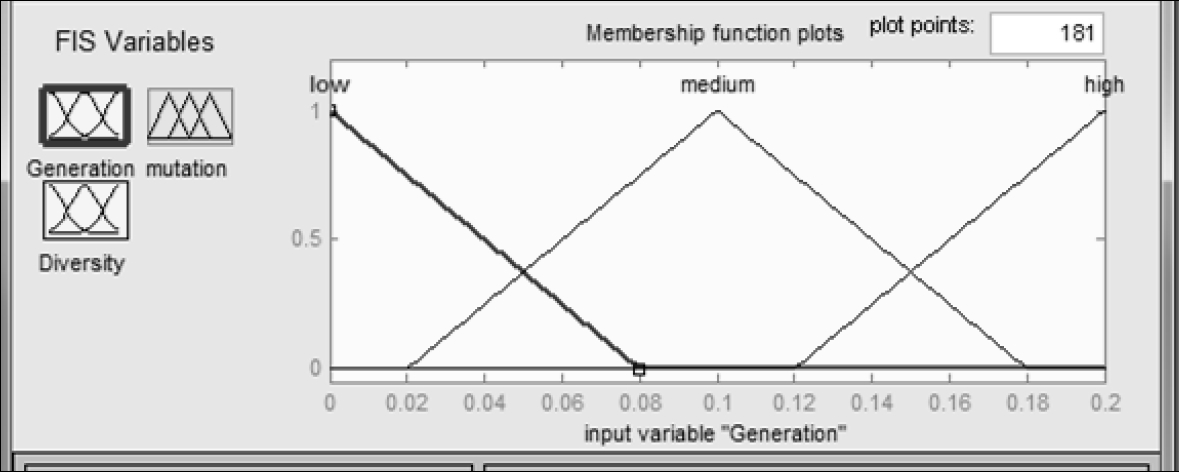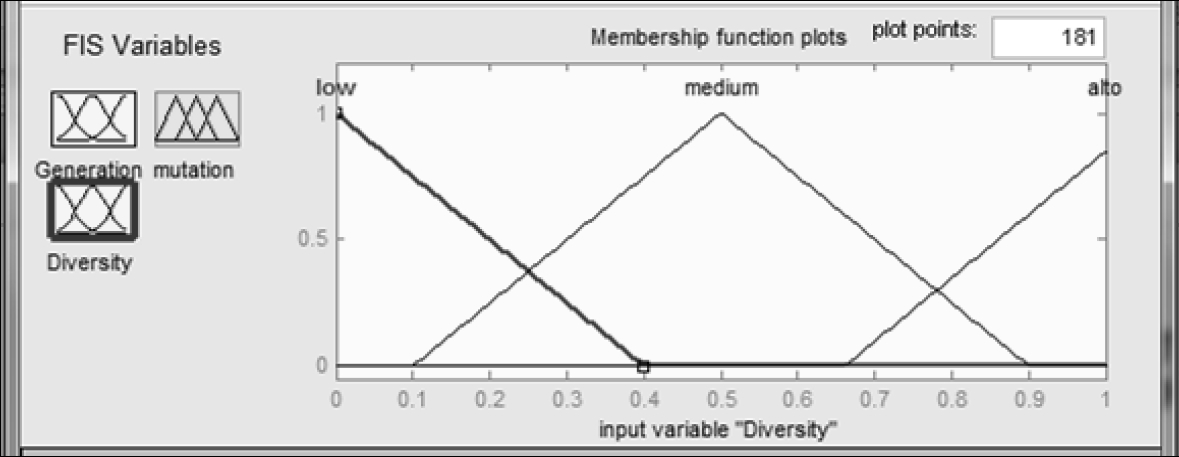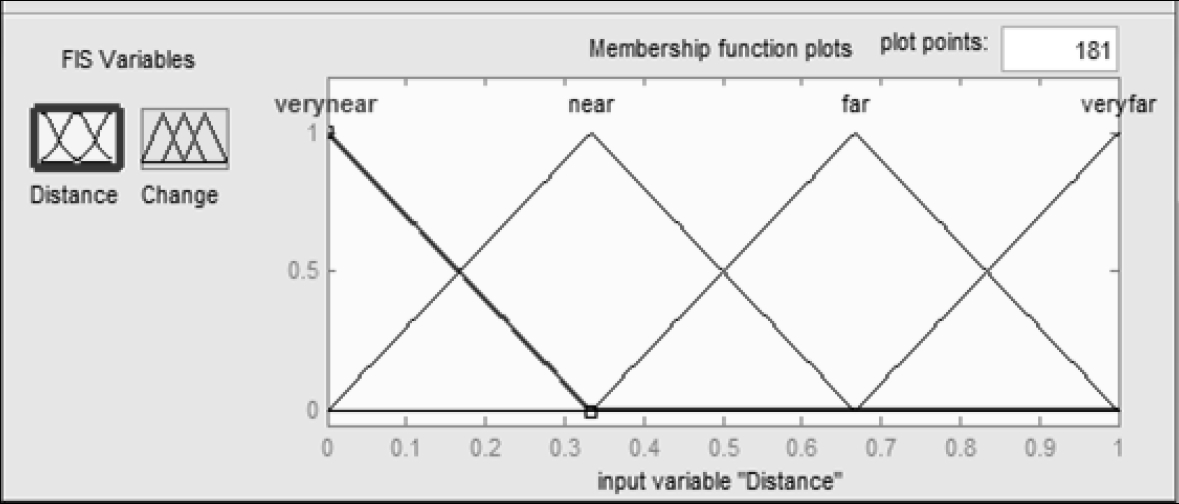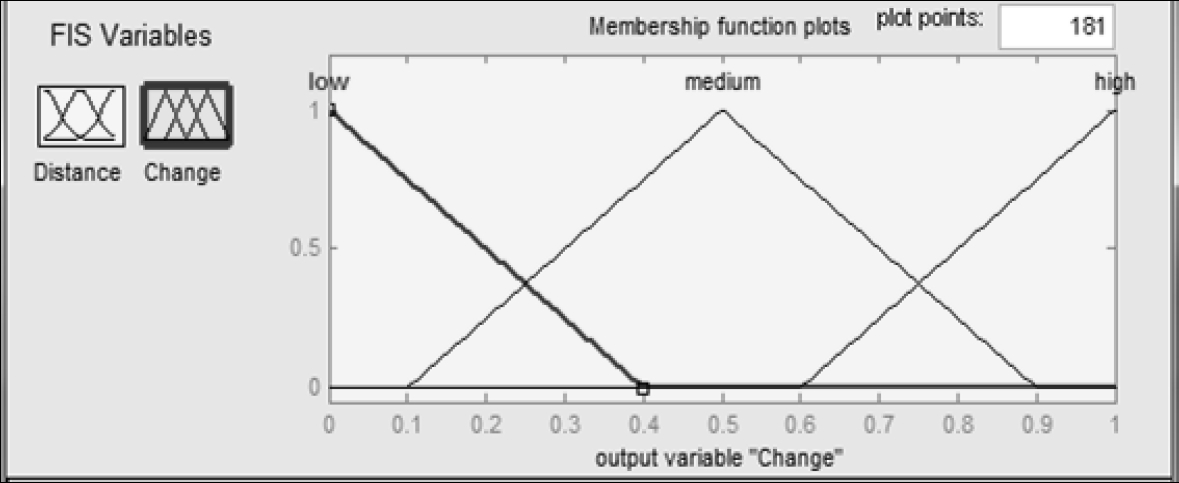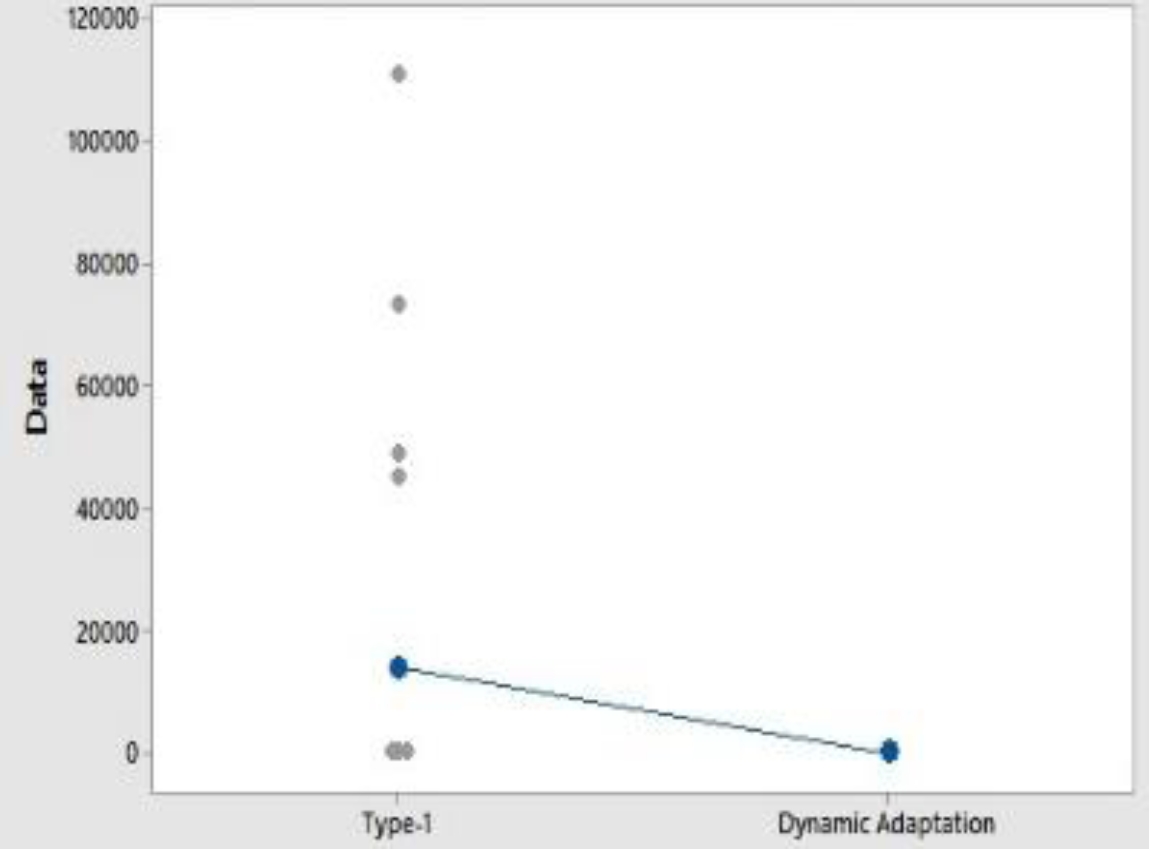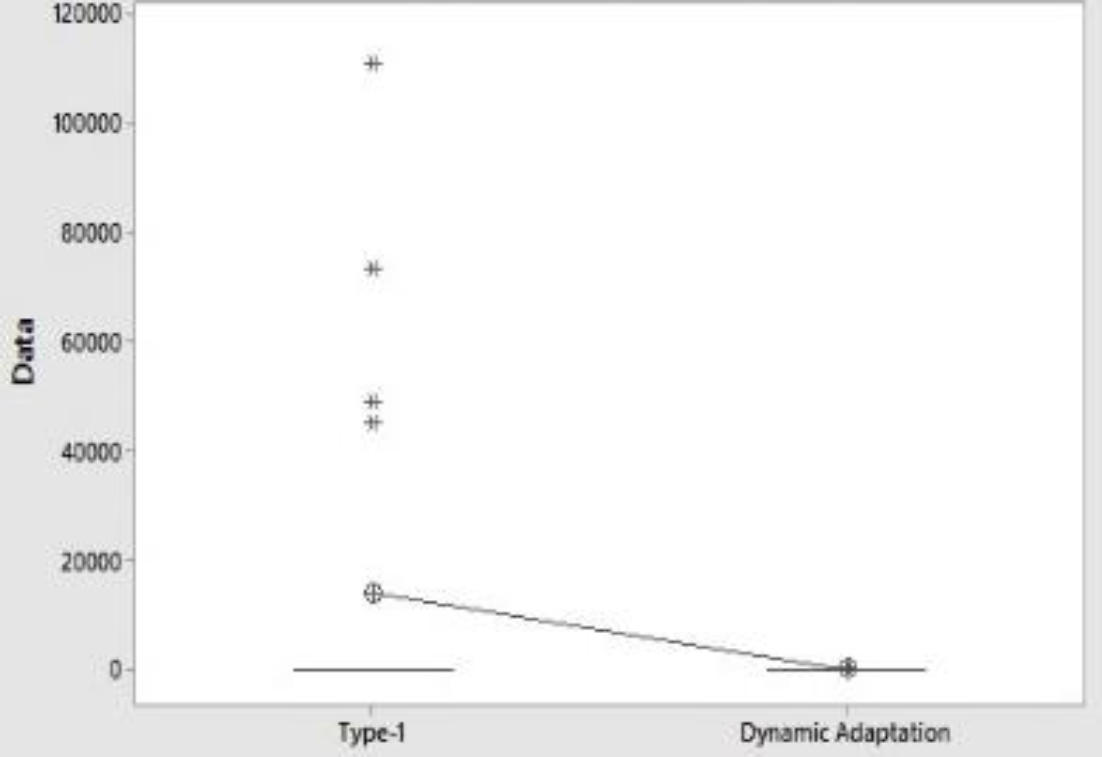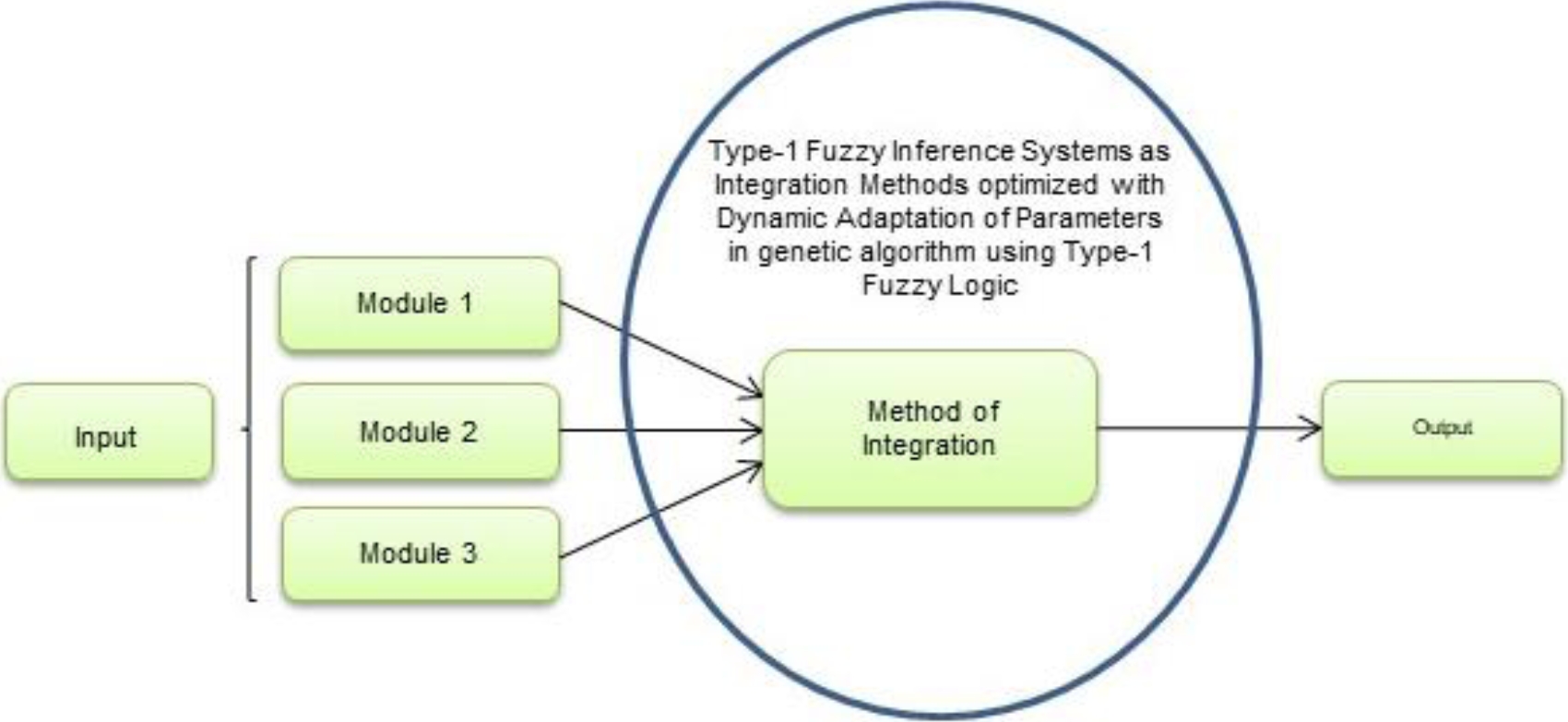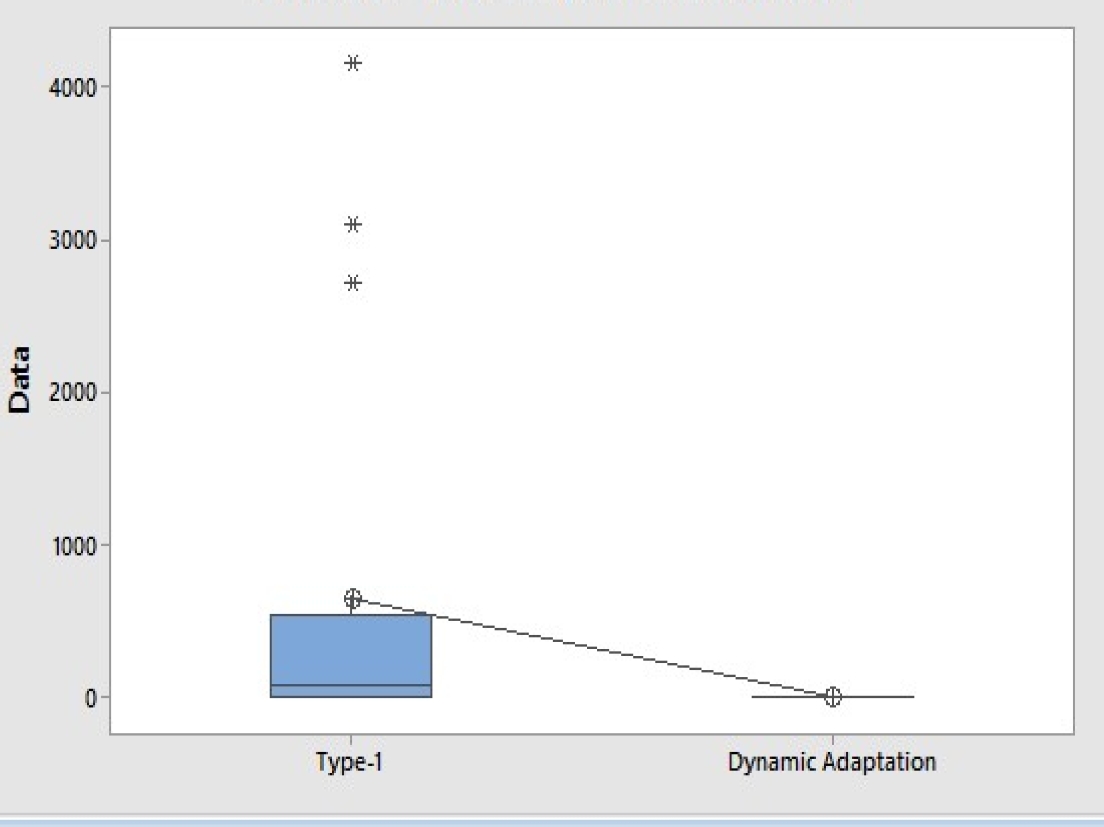1 Introduction
Recently there has been increasing attention and interest on biometric patterns for validation and people identification, creating in this way new applications, like passports with biometrics characteristics in a first implementation was the using face pictures, but now they include the fingerprints too, and many new applications like access systems for buildings, computers, cellphones using voice, signature and written for recognition [1, 2, 3, 4].
We know that none of human been share his own face, footprint and whistle voice because of that we can use these singularities for biometrics fundamentals, a discipline that study the patterns recognitions using the physiologic characteristics (footprint, iris, face, retina,) or behaviors (voice, signature,…).
Biometrics provides true people identification, since this technology are based on unique body features recognition, that the recognition is in function on who they are, and it could be provide a precise and efficient people control [2, 5, 6]. However, researchers are looking to create robust biometrics systems with improved techniques, in other words we are optimizing our patterns recognitions systems to increase the efficiency of the solutions [29, 30]. Meta-heuristics have developed dramatically since their inception in the early 1980’s. They had widespread success in attacking a variety of practical and difficult combinatorial optimization problems.
They incorporate concepts based on biological evolution, intelligent problem solving, mathematical and physical sciences, nervous systems, and statistical mechanics [7, 28]. Therefore, the main goal of this research is an improvement to the convergence of the genetic algorithm implementing dynamic adaptation of parameters using Type-1 Fuzzy Logic of the genetic algorithm.
These metaheuristic uses parameters like mutation percentage, gap generation, crossing, and selection and these influence the behavior of it. In this work we can use two parameters for adaptation: GAP generation and mutation.
The main contribution in this paper is the fuzzy adaptation of parameters in the genetic algorithm using type-1 fuzzy logic, and thus finds the optimal values of the parameters of the fuzzy integrators, to improve the recognition percentage of the modular neuronal network for multimodal biometrics. Some authors have worked with fuzzy adaptation of different parameters in genetic algorithms for different applications such as control, statistics, mathematical functions, etc. [8, 9,10, 11, 22, 23, 24, 25, 26].
The organization of this paper is follows: In Section 2 it is explained the theoretical basis, in Section 3 the description of the proposed method is shown, in Section 4 the obtained results are presented, and statistical test are observed, finally Section 5 presents the conclusions.
2 Theoretical Basis
In previous work [12] we presented parameter optimizations results for the fuzzy integrator of Modular Neural Networks applied on patterns recognition using face, fingerprint and voice biometrics, getting very good results. However, we now propose a fuzzy parameters adaptation to improve on our own previous results.
2.1 Genetic Algorithms
The Genetic Algorithm (GA) is a search technique based on Darwin’s theory evolution. They are adaptive methods that can be used to solve search and optimization problems. They are based on the genetic process of the living organisms. Throughout the generations, the populations evolve in the same form as in nature, with the principles of natural selection and the survival of fittest, postulated by Darwin. Simulating evolution, GA’s can create solutions to problems of the real world [21]. The use of new representations and the construction of new operators to manipulate information have caused that the present conception of a GA is quite different and more general than the original idea.
The procedure the GA is the following:
| Begin t = 0 to initialize P(t) to evaluate P(t) while (the condition of shutdown is not fulfilled) do begin t=t+1 to select P(t) from P(t-1) to apply crossover and mutation on P(t) to evaluate P(t) end End |
Genetic algorithms are part of the evolutionary techniques, which have been applied on many kinds of problems helping in the search of the best solution. However, for the parameter configuration we used the error change to try the ideal parameter to obtain the best results. Therefore, because of that in this paper we are making a new method for fuzzy adaptation of parameters in Genetic algorithms to optimize Fuzzy Systems as integration methods in a modular neural network for multimodal biometrics. These methods of integration are based on techniques of type-1 fuzzy logic. In addition, the fuzzy systems are optimized whit fuzzy adaptation of parameters in genetics algorithms for its convergence; in this research the parameters of GGAP (GAP Generation, how many new individuals are created in each cycle) and Mutation (Mutation percentage for maintain the genetic diversity) are being used.
3 Proposed Method
Figure 1 shows the general architecture of the fuzzy adaptation of parameters in genetics algorithms; where we can see that the genetic algorithm whit dynamic adaptation of parameters was used to obtain the type-1 fuzzy inference systems with Gaussian, triangular and trapezoidal membership functions and these are used as integration methods in the MNN’s.
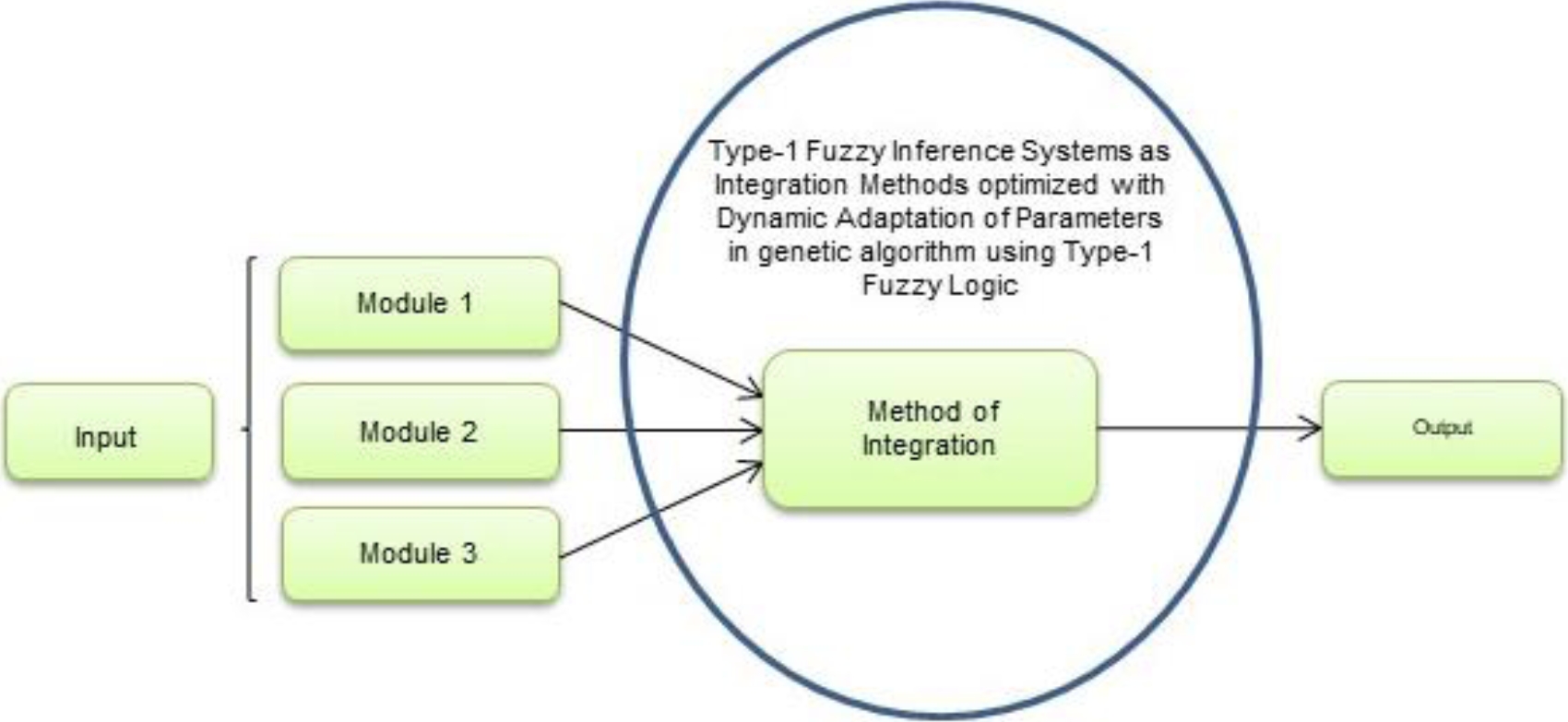
Fig. 1 General architecture of the fuzzy adaptation of parameters in genetics algorithms for method of integration in Modular Neural Network for multimodal biometry
The input data that was used to carry out the training of the modular neural network were images of the face of 30 different people, to perform the training without noise, in addition to using 30 images of the face of these same people but with different gestures, to use them in training with noise. The images used were preprocessed with the Wavelet Function to obtain better results in training [27].
The modular neuronal network that was trained has three modules, one for face, another for fingerprint and finally the one used for voice, each of the three modules has three sub-modules, the output of the RNM is a vector of 30 activations (in this case because the network has been trained with 30 different people), which are calculated after having simulated the Network once it has been trained.
Once the winning activations for each module have been obtained, they are entered into the fuzzy integrator, in which said activations are evaluated and depending on the characteristics of the fuzzy integrator; a final output result was obtained, which will tell us, which is the winning module.
The result of the fuzzy system will tell us which module it belongs to, and once this information is obtained, it will be possible to know which person has been recognized. In this section, a mathematical representation of fuzzy system for input and output variables is presented and explained below.
For the Fuzzy Adaptation of Parameters in Genetic Algorithms, we use Type-1 Fuzzy Systems and Gaussian, triangular and trapezoidal membership functions respectively for each fuzzy system used as we can see the Figure 2.
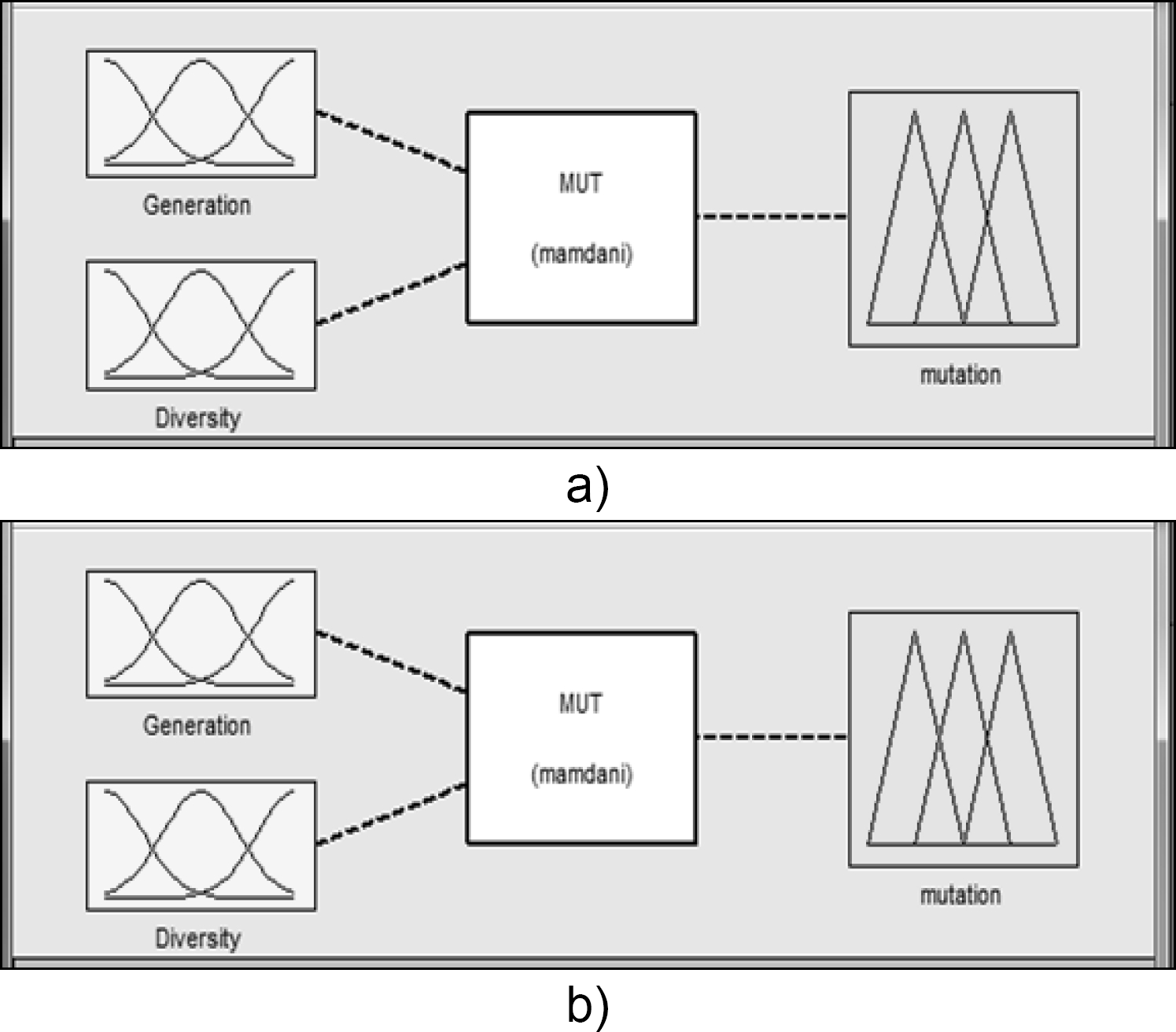
Fig. 2 Fuzzy system for dynamic adaptation of parameters a) FIS for the adaptation of the mutation parameter b) FIS for the adaptation of the GGAP parameter
The type-1 Fuzzy Inference System in a) figure 2 is a fuzzy system that has 2 inputs, which are composed by three membership functions (low, medium, high) each; and an output that defines the mutation that will work in the next generation. The Generation variable is defined by Eq. 1 and Diversity variable is defined by Eq. 2:
where:
Generation is a percentage of the elapsing generations,
Current generation represents the number of elapsing generations, and
Maximum number of generations is the total number of generations set for the optimization algorithm to find the best possible solution:
where:
𝑛 = |
Number of individuals of one generation, |
𝑁 = |
Total of individuals of all generations, |
𝑡 = |
Total of generations. |
In Figures 3, 4 and 5, we can find the structure of the inputs and the output of this fuzzy system.
The type-1 Fuzzy Inference System in b) figure 2, is a fuzzy system that has 1 input (Distance) which measure how close we are to the solution for the convergence algorithm and is composed by four membership functions (very near, near, far, very far) each; and an output that defines the replacement percentage of individuals for the next generation. The Distance was calculated using Euclidean Distance defined by Eq.3 [13]:
where:
|
Two columns of data to be compared where |
𝑛 = |
The number of individuals in the generation, and 𝑎 and 𝑏 = The values of each iteration. |
In Figures 6, and 7 we can see the structure of the inputs and the output of this fuzzy system. We use Type-1 Fuzzy Systems and Gaussian, triangular and trapezoidal membership functions respectively.
4 Simulation Results
In this paper, a comparison is made between type-1 fuzzy integration methods of a modular neuronal network optimized with GA; where we emphasize its optimization of parameters to improve results.
We make several experiments using genetics algorithms to create a Type-1 Fuzzy Inference System (Type-1 FIS), with Gaussian, Triangular and, Trapezoidal membership functions like fuzzy integrator with a dynamic parameter adaptation in the GA using type-1 fuzzy logic and getting a comparative with the previous work results [14].
It is important to mention that was optimized using the adaptation of two parameters, mutation and gap generation were adapted using fuzzy systems and the behavior result is shown in the following tables.
For these experiments, we used 100 individuals in the maximal Number of generations, Roulette method as a selection, real-value Mutation, simple and multipoint recombination for the Genetic Algorithm with Mutation and GAP Generation dynamic parameters in the GA. In all cases the individuals and recombination percentage parameters are selected based on several experiments that we performed, this is, by trial and error we chose these parameters.
We can see in Table 1, 20 experiments are performed obtaining type-1 FIS with Gaussian membership functions and fuzzy adaptation of parameters. The obtained average error for results in table 1 is 0.014362642 with minimal error from 2.18E-05.
Table 1 GA Results obtaining Type-1 Fuzzy Inference Systems with Gaussian Membership Functions
| Experiment | Individuals | Recombination | Stop Generation |
Execution Time of GA |
Error |
| 1 | 100 | 0.1 | 100 | 22 min | 0.00316636 |
| 2 | 90 | 0.2 | 22 | 3 min | 0.0001083 |
| 3 | 80 | 0.3 | 100 | 12 min | 0.00167717 |
| 4 | 70 | 0.5 | 7 | 1 min | 0.00328737 |
| 5 | 60 | 0.45 | 100 | 9 min | 0.00093953 |
| 6 | 50 | 0.65 | 10 | 43 sec | 0.00124117 |
| 7 | 40 | 0.7 | 3 | 15 sec | 0.00120496 |
| 8 | 30 | 0.6 | 100 | 8 min | 0.00888745 |
| 9 | 20 | 0.8 | 55 | 1 min | 0.10445096 |
| 10 | 10 | 0.9 | 4 | 4 sec | 0.0213644 |
| 11 | 5 | 1 | 61 | 15 sec | 7.33E-04 |
| 12 | 15 | 0.95 | 2 | 5 sec | 0.03827975 |
| 13 | 25 | 0.85 | 100 | 20 min | 0.08112368 |
| 14 | 35 | 0.65 | 5 | 16 sec | 0.00075787 |
| 15 | 45 | 0.75 | 8 | 32 sec | 0.012451 |
| 16 | 55 | 0.6 | 3 | 15 sec | 0.00143558 |
| 17 | 65 | 0.4 | 6 | 45 sec | 0.00523334 |
| 18 | 75 | 0.35 | 11 | 2 min | 2.18E-05 |
| 19 | 85 | 0.25 | 100 | 12 min | 0.00055517 |
| 20 | 95 | 0.15 | 100 | 14 min | 0.00033376 |
In Table 2, we can find 20 experiments are performed obtaining type-1 fuzzy systems with Triangular membership functions. The obtained average error for the results in table 2 is 0.0011531 with minimal error of 1.3233E-06.
Table 2 GA Results obtaining Type-1 Fuzzy Inference Systems with Triangular Membership Functions
| Experiment | Individuals | Recombination | Stop Generation |
Execution Time of GA |
Error |
| 1 | 100 | 0.1 | 51 | 7 min | 0.0001414 |
| 2 | 90 | 0.2 | 100 | 12 min | 0.0009698 |
| 3 | 80 | 0.3 | 100 | 11 min | 0.0006721 |
| 4 | 70 | 0.5 | 76 | 7 min | 0.0007262 |
| 5 | 60 | 0.45 | 20 | 2 min | 0.0006552 |
| 6 | 50 | 0.65 | 100 | 6 min | 0.0003168 |
| 7 | 40 | 0.7 | 21 | 1 min | 0.0001046 |
| 8 | 30 | 0.6 | 85 | 4 min | 7.87E-05 |
| 9 | 20 | 0.8 | 28 | 1 min | 0.0004417 |
| 10 | 10 | 0.9 | 100 | 1 min | 2.90E-05 |
| 11 | 5 | 1 | 77 | 33 seg | 9.52E-04 |
| 12 | 15 | 0.95 | 27 | 35 seg | 0.0066135 |
| 13 | 25 | 0.85 | 100 | 3 min | 0.005414 |
| 14 | 35 | 0.65 | 13 | 1 min | 0.0004469 |
| 15 | 45 | 0.75 | 43 | 3 min | 0.0007217 |
| 16 | 55 | 0.6 | 100 | 7 min | 1.32E-06 |
| 17 | 65 | 0.4 | 84 | 8 min | 0.0001259 |
| 18 | 75 | 0.35 | 100 | 10 min | 6.53E-05 |
| 19 | 85 | 0.25 | 23 | 3 min | 0.0010608 |
| 20 | 95 | 0.15 | 100 | 12 min | 0.0035257 |
In Table 3, we can see 20 experiments are performed obtaining type-1 FIS with Trapezoidal membership functions. The obtained average error for results in table 3 is 0.03088201 with minimal error from 0.0146283.
Table 3 GA Results obtaining Type-1 Fuzzy Inference Systems with Trapezoidal Membership Functions
| Experiment | Individuals | Recombination |
Stop Generation |
Execut. Time of GA |
Error |
| 1 | 100 | 0.1 | 150 | 23 min | 0.029779 |
| 2 | 90 | 0.2 | 100 | 7 min | 0.0154958 |
| 3 | 80 | 0.3 | 100 | 6 min | 0.0287844 |
| 4 | 70 | 0.5 | 100 | 3 min | 0.0362728 |
| 5 | 60 | 0.45 | 100 | 3 min | 0.0312307 |
| 6 | 50 | 0.65 | 100 | 3 min | 0.0146283 |
| 7 | 40 | 0.7 | 100 | 2 min | 0.0442655 |
| 8 | 30 | 0.6 | 100 | 4 min | 0.0356279 |
| 9 | 20 | 0.8 | 100 | 3 min | 0.0196686 |
| 10 | 10 | 0.9 | 100 | 30 seg | 0.0485201 |
| 11 | 5 | 1 | 100 | 49 seg | 0.0205001 |
| 12 | 15 | 0.95 | 100 | 2 min | 0.0150341 |
| 13 | 25 | 0.85 | 100 | 30 seg | 0.0174069 |
| 14 | 35 | 0.65 | 100 | 1 min | 0.0439742 |
| 15 | 45 | 0.75 | 100 | 2 min | 0.0515563 |
| 16 | 55 | 0.6 | 100 | 1 min | 0.022966 |
| 17 | 65 | 0.4 | 100 | 1 min | 0.0450856 |
| 18 | 75 | 0.35 | 100 | 2 min | 0.0381298 |
| 19 | 85 | 0.25 | 100 | 2 min | 0.0199817 |
| 20 | 95 | 0.15 | 100 | 3 min | 0.0387323 |
Comparing the previous work results [14], we can observe in Tables 4, 5 and 6 the behavior of the GA, where we can see that a minimum error is reached using the technique of adaptation of dynamic parameters for the experiments of the fuzzy integrators for each membership function (Gaussian, Triangular and Trapezoidal) and average errors.
Table 4 Results of the simple GA and fuzzy adaptation of parameters in GA obtained Type-1 Fuzzy Integrators with Gaussian membership functions
| Achieved error with simple GA |
Achieved error with fuzzy adaptation
of parameters in GA |
| 0.000164788 | 0.00316636 |
| 0.183854323 | 0.0001083 |
| 0.00181081 | 0.001677168 |
| 73090.12557 | 0.00328737 |
| 0.02483356 | 0.000939528 |
| 0.00011068 | 0.001241168 |
| 0.06011866 | 0.001204955 |
| 0.03585971 | 0.008887452 |
| 0.006970346 | 0.104450958 |
| 0.04190672 | 0.021364401 |
| 0.0045917 | 7.33E-04 |
| 0.26194236 | 0.038279747 |
| 0.10640646 | 0.081123681 |
| 0.00346566 | 0.000757873 |
| 0.00036119 | 0.012450999 |
| 44912.1226 | 0.00143558 |
| 110898.583 | 0.005233336 |
| 0.000164788 | 2.18E-05 |
| 0.00444927 | 0.00055517 |
| 48898.7709 | 0.000333762 |
| Average Error | |
| 0.041501285 | 0.014362642 |
Table 5 Results of the simple GA and fuzzy adaptation of parameters in GA obtained Type-1 Fuzzy Integrators with Triangular membership functions
| Achieved error with simple GA |
Achieved error with fuzzy adaptation
of parameters in GA |
| 0.000673922 | 0.00014141 |
| 6.617518707 | 0.000969832 |
| 0.000038401 | 0.000672131 |
| 1.130730602 | 0.000726169 |
| 0.0004582 | 0.000655161 |
| 283.15693 | 0.00031685 |
| 0.000075054 | 0.000104614 |
| 108.094781 | 7.87E-05 |
| 0.00050029 | 0.000441674 |
| 0.00522077 | 2.90E-05 |
| Achieved error with simple GA | Achieved error with fuzzy adaptation
of parameters in GA |
| 0.00263167 | 9.52E-04 |
| 0.00123392 | 0.006613505 |
| 0.000073374 | 0.005413976 |
| 0.00040778 | 0.000446921 |
| 0.00104095 | 0.00072175 |
| 0.000017082 | 1.32E-06 |
| 4.13E-05 | 0.000125909 |
| 0.000085732 | 6.53E-05 |
| 0.00119261 | 0.001060834 |
| 105.15822 | 0.003525663 |
| Average Error | |
| 0.389196189 | 0.001153127 |
Table 6 Results of the simple GA and fuzzy adaptation of parameters in GA obtained Type-1 Fuzzy Integrators with Trapezoidal membership functions
| Achieved error with simple GA |
Achieved error with fuzzy adaptation
of parameters in GA |
| 0.00099803 | 0.02977899 |
| 3097.958065 | 0.0154958 |
| 291.036452 | 0.0287844 |
| 76.61166065 | 0.03627281 |
| 75.0541794 | 0.03123067 |
| 0.00019062 | 0.0146283 |
| 0.00075258 | 0.04426546 |
| 0.00113649 | 0.03562794 |
| 669.433397 | 0.01966862 |
| 0.0002004 | 0.04852013 |
| 4.66257156 | 0.02050014 |
| 61.8436939 | 0.01503412 |
| 524.623463 | 0.01740691 |
| 543.50034 | 0.04397423 |
| 4147.1825 | 0.05155631 |
| 2711.06294 | 0.02296604 |
| 285.2064364 | 0.04508558 |
| 0.001008539 | 0.03812983 |
| 4.6453E-05 | 0.01998168 |
| 331.232653 | 0.03873225 |
| Average Error | |
| 0.298306163 | 0.03088201 |
For this last case with Type-1 Fuzzy Integrators with Trapezoidal membership functions, we can see that in the experiments with simple GA we found better minimum error, but on average we achieved to improve the error with fuzzy adaptation of parameters in GA; therefore, fuzzy integrators with triangular membership functions in the modular neuronal network for multimodal biometry were tested. For the statistic test, we used the T-Student method for the previous results; in these results, DF represents degrees of freedom, the t-value represents the size of the difference relative to the variation in your sample data, and T-value illustrates the calculated difference represented as standard error. If T-value is close to 0 this means, there is not a significant difference. If P value is very low (α< level) then the null hypothesis is rejected and finally the conclusion will be that there is a statistically significant difference.
Next, in Table 7, we can find the results of the statistic test with fuzzy dynamic adaptation using Gaussian membership functions.
Table 7 Statistics Test used Gaussian membership functions in fuzzy dynamic adaptation of parameters
| Two-Sample T-test and CI: simple GA, Fuzzy adaptation of parameters in GA | ||||
| Method | ||||
| µ1: mean of Simple GA with type-1 fuzzy logic integrators | ||||
| µ2: mean of Fuzzy adaptation of parameters in GA with type-1 fuzzy logic integrators | ||||
| Diferance: µ1 - µ2 Note: equal variances are assumed for this analysis | ||||
| Descriptive Statistic | ||||
| Sample | N | Mean | StDev | SE Mean |
| Simple GA | 20 | 13890 | 30942 | 6919 |
| Fuzzy adaptation of parameters | 20 | 0.0144 | 0.0286 | 0.0064 |
| Estimation for the Difference | ||||
| Difference | Pooled StDev | 95% CI for Difference | ||
| 13890 | 21879 | (-116, 27896) | ||
| Test | ||||
| Null hypothesis H0: µ1 - µ2 | ||||
| Alternative hypothesis H1: µ1 - µ2 | ||||
| T-Value | DF | P-Value | ||
| 2.01 | 38 | 0.052 | ||
Figure 8 and 9 show the individual values and boxplot of the achieved error of genetic algorithm execution with Gaussian membership functions, which both are using the simple genetic algorithm and the improve type-1 fuzzy adaptation in mutation and GAP generation parameters.
Table 8 show the results of the statistic test with fuzzy dynamic adaptation using triangular membership functions, that we found an improvement around a 0.3880 of the dynamic fuzzy adaptation against simple genetic algorithm configuration.
Table 8 Statistics Test used Triangular membership functions in fuzzy adaptation of parameters
| Two-Sample T-test and CI: simple GA, Fuzzy adaptation of parameters in GA | ||||
| Method | ||||
| µ1: mean of Simple GA with type-1 fuzzy logic integrators | ||||
| µ2: mean of Fuzzy adaptation of parameters in GA with type-1 fuzzy logic integrators | ||||
| Diferance: µ1 µ2 Note: equal variances are assumed for this analysis | ||||
| Descriptive Statistics | ||||
| Sample | N | Mean | StDev | SE Mean |
| Simple GA | 20 | 25.2 | 68.9 | 15 |
| Fuzzy adaptation of parameters | 20 | 0.00115 | 0.00184 | 0.00041 |
| Estimation for Difference | ||||
| Difference | Pooled StDev | 95% CI for Difference | ||
| 25.2 | 48.7 | (-6.0, 56.4) | ||
| Test | ||||
| Null hypothesis H0: µ1 - µ2 | ||||
| Alternative hypothesis H1: µ1 - µ2 | ||||
| T-Value | DF | P-Value | ||
| 1.64 | 38 | 0.11 | ||
Figures 10 and 11 show the individual values and boxplot of the achieved error of genetic algorithm execution with triangular membership functions, which both are using the simple genetic algorithm and the improve type-1 fuzzy adaptation in mutation and GAP generation parameters.
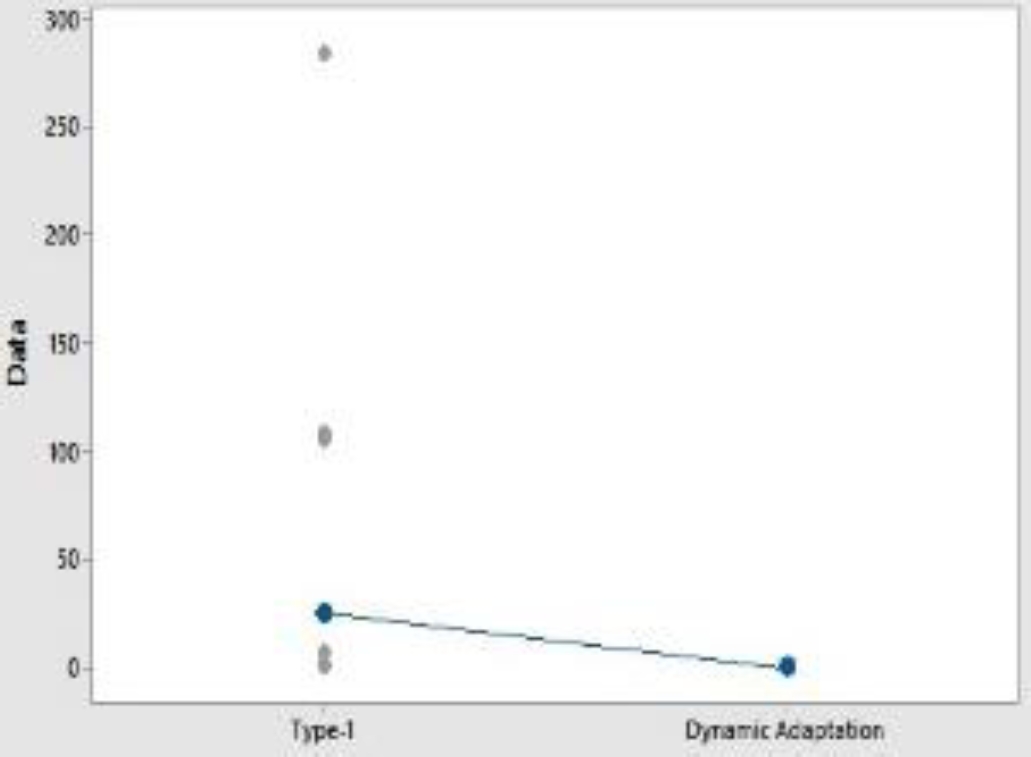
Fig. 10 Individual Value Plot of Simple GA, Fuzzy adaptation of parameters in GA for Triangular MF’s
Finally, Table 9 shows the results of the statistic test with fuzzy dynamic adaptation using trapezoidal membership functions. Figures 12 and 13 show the individual values and boxplot of the achieved error of genetic algorithm execution with trapezoidal membership functions, which both are using the simple genetic algorithm and the improve type-1 fuzzy adaptation in mutation and GAP generation parameters. We used fuzzy logic systems to optimize the mutation and GAP generation parameters of the genetic algorithm. We can observe an improvement performance using dynamic parameter adaptation, giving the triangular membership function configuration in the modular neural network fuzzy integrator to pattern recognition the best average value of the performed test. In Table 10, we can find the test performed in the modular neural network for multimodal biometry, in first place, we make the training of the modular neuronal network with optimized fuzzy integrators using a simple GA and we obtain 29.58% of average recognition.
Table 9 Statistics Test used Trapezoidal membership functions in fuzzy adaptation of parameters
| Two-Sample T-test and CI: simple GA, Fuzzy adaptation of parameters in GA | ||||
| Method | ||||
| µ1: mean of Simple GA with type-1 fuzzy logic integrators | ||||
| µ2: mean of Fuzzy adaptation of parameters in GA with type-1 fuzzy logic integrators | ||||
| Diferance: µ1 µ2 Note: equal variances are assumed for this analysis | ||||
| Descriptive Statistics | ||||
| Sample | N | Mean | StDev | SE Mean |
| Simple GA | 20 | 641 | 1197 | 268 |
| Fuzzy adaptation of parameters | 20 | 0.0309 | 0.012 2 | 0.0027 |
| Estimation for Difference | ||||
| Difference | Pooled StDev | 95% CI for Difference | ||
| 641 | 847 | (99,1183) | ||
| Test | ||||
| Null hypothesis H0: µ1 - µ2 | ||||
| Alternative hypothesis H1: µ1 - µ2 | ||||
| T-Value | DF | P-Value | ||
| 2.39 | 38 | 0.022 | ||
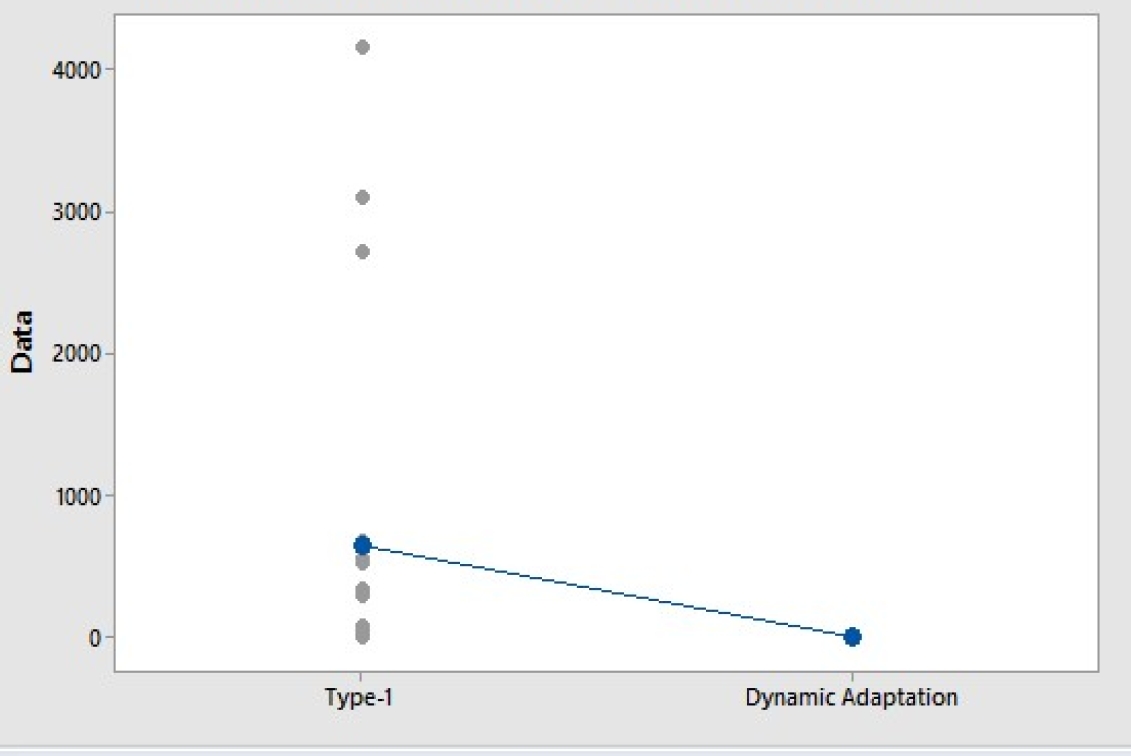
Fig. 12 Individual Value Plot of Simple GA, Fuzzy adaptation of parameters in GA for Trapezoidal MF’s
Table 10 Results of recognition of the modular neural networks with test of fuzzy integrators whit simple GA
| Neural Network Training | Percentage of Recognition with Simple GA | Execution Time |
| 1 | 26.67% | 01:14:16 |
| 2 | 27.78% | 01:50:48 |
| 3 | 31.11% | 00:47:26 |
| 4 | 30.37% | 01:06:37 |
| 5 | 32.59% | 00:47:33 |
| 6 | 33.33% | 01:10:06 |
| 7 | 12.59% | 01:07:10 |
| 8 | 27.41% | 00:54:56 |
| 9 | 31.85% | 01:11:56 |
| 10 | 21.15% | 01:49:43 |
| 11 | 31.48% | 00:48:04 |
| 12 | 35.93% | 00:47:26 |
| 13 | 26.67% | 01:22:33 |
| 14 | 30.74% | 00:35:34 |
| 15 | 35.93% | 00:50:17 |
| 16 | 34.81% | 01:10:40 |
| 17 | 32.59% | 00:48:45 |
| 18 | 33.33% | 00:39:13 |
| 19 | 23.70% | 01:17:49 |
| 20 | 31.48% | 00:43:57 |
On the other hand, table 11 shows the results of 20 tests using the modular neuronal network integrator obtained by GA with the fuzzy dynamic adaptation parameter.
Table 11 Results of recognition of the modular neural networks with test of fuzzy integrators whit Fuzzy Adaptation in the GA
| Neural Network Training | Percentage of Recognition with FuzzyGA | Execution Time |
| 1 | 75.97% | 01:10:08 |
| 2 | 78.74% | 01:35:40 |
| 3 | 91.06% | 00:49:17 |
| 4 | 90.20% | 01:00:28 |
| 5 | 91.15% | 00:43:23 |
| 6 | 91.20% | 01:05:03 |
| 7 | 69.72% | 01:15:25 |
| 8 | 91.29% | 00:57:49 |
| 9 | 91.33% | 01:18:57 |
| 10 | 90.46% | 01:52:47 |
| 11 | 76.88% | 00:41:06 |
| 12 | 77.68% | 00:46:52 |
| 13 | 68.18% | 00:38:46 |
| 14 | 79.29% | 01:32:42 |
| 15 | 91.61% | 00:54:27 |
| 16 | 77.41% | 01:25:56 |
| 17 | 91.70% | 00:47:49 |
| 18 | 91.74% | 00:42:53 |
| 19 | 89.97% | 01:17:25 |
| 20 | 82.44% | 00:39:29 |
The percentage of recognition improved evidently with the fuzzy Type-1 Integrators optimized with the fuzzy adaptation of parameters, obtaining 84.40% of average recognition; achieving a 91.74% as the best percentage of recognition and 75.97% as the worst.
Finally, Table 12 shows comparison results of recognition between optimized fuzzy integrators with simple GA and fuzzy integrators optimized by GA dynamic fuzzy parameters adaptation, where the GA dynamic fuzzy parameters adaptation present a remarkable improvement in the 100% of test.
Table 12 Comparison results of recognition of the modular neural networks with test of fuzzy integrators whit Simple GA and Fuzzy GA.
| Neural Network Training | Percentage of Recognition with Simple GA | Percentage of Recognition with Fuzzy GA |
| 1 | 26.67% | 75.97% |
| 2 | 27.78% | 78.74% |
| 3 | 31.11% | 91.06% |
| 4 | 30.37% | 90.20% |
| 5 | 32.59% | 91.15% |
| 6 | 33.33% | 91.20% |
| 7 | 12.59% | 69.72% |
| 8 | 27.41% | 91.29% |
| 9 | 31.85% | 91.33% |
| 10 | 21.15% | 90.46% |
| 11 | 31.48% | 76.88% |
| 12 | 35.93% | 77.68% |
| 13 | 30.74% | 68.18% |
| 14 | 26.67% | 79.29% |
| 15 | 35.93% | 91.61% |
| 16 | 34.81% | 77.41% |
| 17 | 32.59% | 91.70% |
| 18 | 33.33% | 91.74% |
| 19 | 23.70% | 89.97% |
| 20 | 31.48% | 82.44% |
Table 12 shows the comparison of the recognition percentages of each modular neural network. We can appreciate the improvement of the recognition using Fuzzy GA against Simple GA. Table 11 shows an average percentage of 84.40% using the modular neural network with optimized integrator by Fuzzy GA showing a remarkable performance with the proposed fuzzy dynamic parameter adaptation.
5 Conclusions
In this paper a dynamic adaptation of parameter using type-1 fuzzy logic was proposed to optimize the parameters of membership functions for a type-1 fuzzy integrator of a modular neural network for multimodal biometry.
The main contribution in this work is the fuzzy adaptation of parameters in the genetic algorithm using type-1 fuzzy logic and thus finds the optimal values of the parameters of the fuzzy integrators, to improve the recognition percentage of the modular neural network for multimodal biometrics.
A comparative study of fuzzy integrators methods for modular neural networks in biometry applications is presented. We optimized a type-1 fuzzy integrator using a dynamic fuzzy parameter adaptation in the genetic algorithms against a type-1 fuzzy integrator with simple GA optimization.
The comparison was performed with the simulation results of pattern recognition which the best results were obtained using the dynamic fuzzy parameters adaptation in the GA to answer integration in modular neural network for multimodal biometry.
Genetic algorithms produced good results using the fuzzy parameter adaptation, which compared with the previous works we can notice that there is an increase in the recognition percentage in the neural network for multimodal biometry.
As future work, we can apply the approach in other applications, like in [31-33].











 nueva página del texto (beta)
nueva página del texto (beta)

